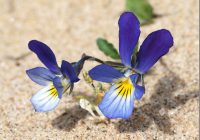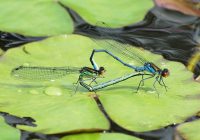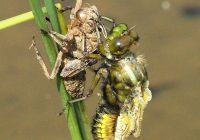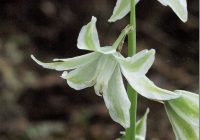Dr Phil Smith’s Wildlife Notes
May 2017
The month was dominated by the ongoing drought, now comparable to that of 1976. No rain fell at all until 12th May, there being only eight days subsequently with minimal precipitation. A mini heat-wave gave temperatures up to 29 degrees on 25th and 26th, a near record for May. By mid-month, I had never seen our sand-dunes so parched at this time of year. Normally resilient plantlife took on a late-summer hue with straw-colours dominant as far as the eye could see. Fortunately, some light rain in the second half of the month improved conditions a little but many plants struggled. I estimated a 90% reduction in marsh-orchid flowers on the New Green Beach near Ainsdale compared with 2016. As usual, the TV weather presenters treated the slightest hint of rain as a national disaster. A letter from Oxford to the Radio Times said it all. “What kind on madness is it for weather forecasters to refer to the “threat” of rain, when we’ve had the driest spring for 20 years? Rivers are running dry, wildlife is threatened, farmers and gardeners are tearing their hair out ….”
As in April, our Natterjack Toads suffered. The only surviving tadpoles I could find were in a few inches of water in the three deepest scrapes at Ainsdale Sandhills Local Nature Reserve. A visit there on 3rd also produced thousands of brightly coloured White Satin moth caterpillars on Creeping Willow, together with one of the much scarcer Dark Tussock. A pair of Stonechats and the first Wall butterfly of the season were also welcome sights, as were several plants of the gorgeous Dune Pansy Viola tricolour subspecies curtisii. A recently published Handbook on British Violas controversially maintains that Dune Pansy is restricted to Braunton Burrows in Devon and the East Anglian Breckland, other records from western dunes being merely dwarfed coastal forms of Wild Pansy Viola tricolour subspecies tricolor. I sent the co-author photographs of our pansy. He replied that he hadn’t previously seen material from Sefton and agreed that my photos were “reminiscent” of the Braunton plant.
The often warm and sunny conditions favoured at least some of our dune fauna, the nationally declining Wall and Small Heath butterflies appearing in good numbers, while two fresh Painted Ladies dashing around on Birkdale Green Beach hinted at a migratory influx. Northern Dune Tiger Beetles were also active on suitably sandy slopes, such as those at Devil’s Hole and the Newest Green Beach ridge where I counted 30 at the end of the month. Less welcome at the Devil’s Hole were over 50 drinks bottles and cans which were collected for recycling.
At least two weeks earlier than usual, spectacular Banded Demoiselles appeared at Alt Bridge, Downholland Book, on 11th, while the same day I watched a Broad-bodied Chaser emerging from its exuvia at a Hightown scrape. A little further afield, the Leeds/Liverpool canal at Aintree rewarded a visit on 27th when Trevor Davenport and were delighted by 49 Red-eyed Damselflies, including 12 pairs, on Fringed Water-lily leaves. First recorded last year, this colony is the most northerly so far discovered in Britain.
Another highlight was a new plant for the dune coast, Drooping Star-of-Bethlehem (Ornithogalum nutans). A single flower-spike of this handsome species was spotted by Patricia Lockwood and Robert Freeth in National Trust woodland west of Larkhill. It is non-native, but has become naturalised in a few places, mainly in the south and east of England. There is an old record for Formby in 1936 but it is not known whether it was found on the dunes.
On 22nd, Patricia and I travelled the few miles inland to Haskayne Cutting Nature Reserve to count the marsh-orchids. The damp grassland here is managed by mowing in late summer, which has resulted in a steady increase in the orchids since we started monitoring them in 2012. We counted 1840 flower-spikes of Northern and Southern Marsh-orchids compared with 1571 last year. Several new plants for the reserve included the attractive Water Avens which is now rare in lowland Lancashire. Two singing male Yellowhammers reminded me of my younger days when its “Little-bit-of-bread-and-no-cheese” song was a familiar sound. This is no longer the case; like so many other farmland birds this species has declined by 50% in the last 25 years and is now Red-listed as “endangered” in the UK.
Since 1980, I have been studying a large area of grassland on wet acid sandy soils east of the railway line at Hightown. Several reports have described its rich flora, including over 20 Royal Ferns, together with many other usual plants and a rich insect community. I was therefore horrified to discover late in the month that the whole area had recently been ploughed up. According to regulations amended in 2017, Natural England must be consulted before conversion of an area of more than 2 ha of permanent grassland to arable agriculture. Investigations are underway.




